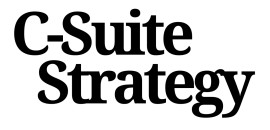
Understanding the OGSM Framework
Decoding the Structure of OGSM
The OGSM framework stands for Objectives, Goals, Strategies, and Measures. This model serves as a strategic planning tool that systematically organizes and clarifies a company’s vision into actionable elements. It’s a comprehensive approach that can be visualized through a diagram, making the strategic process more accessible for teams at all levels.
The core of OGSM is its ability to translate broad objectives into specific, measurable goals. These goals are the concrete outcomes companies aim to achieve, often developed during strategic planning sessions. By utilizing OGSM templates, organizations can craft strategies that are both effective and aligned with their long-term vision.
In practice, the OGSM framework helps organizations connect their overarching mission with detailed plans to achieve progress. It stands out from other models due to its emphasis on clarity and alignment, allowing leaders to easily track their strategic initiatives.
To streamline the execution of this framework, filling an OGSM template provides a structured approach to capturing each component of the strategy, fostering consistency and alignment across departments. You can explore further how a structured executive summary slide can provide strategic impact through our detailed guide on preparing for success in strategy implementation.
Aligning Objectives with Company Vision
Harmonizing Company Vision with Objectives
In the realm of strategic planning, aligning objectives with the company's vision is a pivotal step for leaders seeking to ensure their organizations are nimble and adaptive. For any strategy to be effective, it must start by clearly defining where the organization wants to go. This serves as a guiding beacon, helping teams to remain on course.
An OGSM framework offers a structured way to align your objectives with this overarching vision. By viewing the vision as a long-term aspiration, organizations can develop a strategic plan that links qualitative objectives with quantitative goals. This ensures that every action taken is a step towards the desired future.
Let's unpack how an OGSM template helps in creating clear objectives:
- Define the Company Vision: It all begins with understanding what the organization wants to achieve in the long term. This vision must be ambitious yet realistic to motivate stakeholders effectively.
- Establish Measurable Objectives: Objectives must be clear and measurable to track progress effectively. These objectives serve as the building blocks of your strategic plan, ensuring everyone understands their role in achieving the company vision.
- Utilize the OGSM Model: The OGSM model acts as a strategic diagram, connecting the objectives to practical strategies and measurable outcomes. This model facilitates a shared vision across the organization, preventing misalignments that could derail progress.
Throughout the OGSM process, change management becomes an essential practice. Goals and strategies may evolve as market conditions change, requiring ongoing alignment to stay true to the company's vision. Successfully mastering the harmonization of vision and objectives sets the stage for crafting effective strategies and maintaining competitive edge.
For a deeper understanding of setting these objectives in the context of quality standards, explore our insights on elevating standards in C-suite strategy.
Setting Measurable Goals
Establishing Measurable Milestones
Developing measurable goals is a crucial step in mastering strategic alignment through the OGSM framework. Goals act as the bridge between high-level objectives and the specific strategies needed to achieve them. Employing the OGSM model ensures that your company's vision is translated into clear and actionable objectives. Each goal should not only be ambitious but also grounded in reality, serving as stepping stones toward long-term success. The OGSM template provides a structured approach to defining these goals, emphasizing the importance of measurable criteria. Here are key considerations:- Clarity and Focus: Each goal must be well-defined and directly aligned with the company's overarching objectives. This clarity enables teams to concentrate efforts on what truly matters.
- Measurability: Integrate quantifiable metrics to track progress effectively. Whether aiming to increase market share or enhance operational efficiency, measurable goals allow organizations to assess performance and make informed decisions.
- Strategic Relevance: Ensure that the goals are relevant to the broader strategic objectives, acting as catalysts for growth and innovation. A strong alignment with the company's direction ensures unity across all departments.
- Time-Bound Targets: Assign realistic timelines to each goal to instill a sense of urgency and foster a culture of accountability. With clear deadlines, teams are more motivated to achieve their targets.
Crafting Effective Strategies
Developing Strategies That Drive Success
Crafting effective strategies within the OGSM framework is crucial for translating your objectives into actionable plans. This step is where the rubber meets the road, turning high-level goals into tangible actions that propel your organization forward.
To begin, ensure that your strategies are aligned with the overarching objectives and measurable goals you've established. This alignment is essential for maintaining a clear direction and ensuring that every strategic initiative contributes to the broader vision of the company.
Consider the following when developing your strategies:
- Clarity and Simplicity: Strategies should be straightforward and easy to understand. Avoid overly complex plans that could lead to confusion or misinterpretation among team members.
- Flexibility: While it's important to have a clear plan, be prepared to adapt your strategies in response to changing market conditions or internal dynamics. Flexibility can be a significant asset in maintaining momentum and achieving long-term goals.
- Resource Allocation: Ensure that your strategies are supported by the necessary resources, including time, personnel, and budget. Proper allocation is vital for successful implementation and progress tracking.
- Stakeholder Engagement: Engage key stakeholders in the strategic planning process to gain insights and foster buy-in. Their support can be instrumental in overcoming obstacles and achieving objectives.
By focusing on these elements, you can develop strategies that not only align with your objectives but also enhance your organization's ability to achieve its goals. Remember, the effectiveness of your strategies will ultimately be reflected in the measures you implement and monitor, as discussed in the subsequent section.
Implementing and Monitoring Measures
Executing and Evaluating for Strategic Triumph
In the realm of strategic planning, a vibrant vision without implementation is akin to a car without fuel. The OGSM framework empowers leaders to propel their strategic objectives from conception to realization. Implementing and monitoring measures through the OGSM model ensures that each step aligns with the company's established direction, providing a seamless transition from strategy development to actionable results.
Embed the strategic objectives within your organizational ethos. This involves adopting a clear objective and creating pathways to align these objectives with your team’s day-to-day activities. The journey from setting measurable goals to executing strategies demands a commitment to transparency and adaptability, foundational elements for any thriving long-term strategy.
- Seamless Integration: Transitioning strategies into daily operations is not an isolated task. Encourage collaboration, using diagrams and templates not only to communicate the plan, but to visualize the journey toward objectives and goals.
- Adaptive Strategies: Implement a feedback loop to regularly assess progress and revisit the objectives. This requires a flexible approach where changes in market dynamics or organizational shifts are met with agile adjustments in the strategy.
- Quantitative and Qualitative Measures: Establish metrics that blend both quantitative outcomes and qualitative achievements. Download OGSM templates to help measure progress effectively, ensuring they encompass objective qualitative assessments.
- Continuous Evaluation: Regular reviews of the implemented strategies and their outcomes help in refining the strategic plan. Use tools like the OGSM template to track progress meticulously against your goals and objectives.
Through the strategic implementation phase, it becomes clear how the OGSM model stands objective in its purpose: to unify the company’s vision with precise, measurable actions. This synchronization not only helps organizations achieve their ultimate market share targets but also enhances their adaptability in change management. As you plan with the OGSM framework, embrace these principles to ensure that your strategic endeavors not only flourish in concept but succeed in execution.














